By now we’ve all had a chance to digest the painful loss in Austin – beyond the obvious defensive failures, what did we learn from the opening game about the 2016 Irish? Checking out the five factors (with some new additions!) shows how poor leverage rates and first down performance doomed Notre Dame, and just how significant an impact losing Torii Hunter Jr. had for the Irish offense moving forward.
Explosiveness
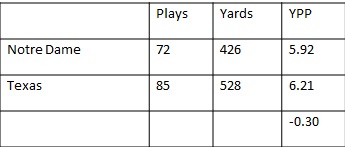
The top question for the Irish defense this offseason was if they could limit the long, explosive plays that killed them in 2015. It seemed like a reasonable goal, in particular since so many of 2015’s mistakes seemed correctable – better tackling and discipline with trick plays and assignments were responsible for the vast majority of the chunk plays given up.
The answer was a resounding “NO”. Freshman Shane Buechele was able to pick on a young secondary, in particular Nick Coleman, and hit the two most impactful plays of the game with a 72-yard touchdown to John Burt and 68-yarder to Jerrod Heard down to the Irish one-yard line. Sterlin Gilbert leaned on experienced running backs early, and every time he picked a spot to take a shot downfield it seemed to be open.

The Irish offense flashed big-play ability as well, with Equanimeous St. Brown and C.J. Sanders providing encouraging sparks. Replacing Will Fuller will be impossible, but there are still a lot of weapons at the offensive staff’s disposal.
Notre Dame was fairly explosive running the ball, but I’d echo Eric’s comments from his recap in wondering if Tarean Folston taking the majority of the carries at running back may hinder the Irish a little bit here. While Folston’s always been an efficient runner, and to his credit broke off the long 54-yarder on the opening drive, he’s never been particularly dynamic in the open field. It may be a small difference in carries going to Adams versus Folston, but unfortunately with the defense looking miserable early on, the offense has to optimize every single area it can.
Efficiency

Not only were the Longhorns more explosive, they were also more efficient than Notre Dame both on the ground and in the air. That was unexpected. Looking ahead to this game, it appeared Notre Dame would have the likely edge in both trenches!
Both of those advantages never materialized – the Irish offensive line was inconsistent, and struggled with communication and penalties in a hostile environment. Kizer and the line also weren’t helped by the young receiving corps, who struggled in particular after the loss of Torii Hunter.
Charlie Strong’s defense in 2015 was a top-20 unit last season in S&P+ passing defense and adjusted sack rate, and they may be even better last year. But their run defense should have been susceptible, and in key moment down the stretch the Irish were unable to impose their will on the home team, with just one successful run in eight attempts in the 4th quarter/OT after taking a 35-31 lead.

I had doubts about Sterlin Gilbert’s offense totally overhauling a unit that couldn’t pass or protect the quarterback last year, but at least against Brian Van Gorder it worked perfectly. There wasn’t anything unexpected – run-heavy using experienced backs and quick throws to get Buechele in a rhythm, then taking some deep shots down field.
But the Irish looked unprepared for all of it. No matter what wrinkle that was thrown at them – extremely fast tempo, the 18-wheeler package with Swoopes, or empty five-wide formations – the Irish struggled. The run defense, going mostly with 3 down-linemen for yet to be explained reasons, was gashed – taking out two bad snaps that were total gifts, the Horns rushed 56 times for 267 yards – 4.77 yards per carry.
In particular Texas was able to keep things simple for Buechele by establishing the run early and avoiding passing downs. Notre Dame’s in theory should have had a huge advantage in passing downs, even with a lackluster pass rush, and they actually fared well when Texas had to pass. But they couldn’t force those situations often enough – the Horns ran it 29 times on first down for 5.5 yards per carry. That opened up the deep shots and easy, quick reads for Buechele and was a huge yet somewhat hidden part of the defensive ineptitude.
Field Position

The Irish won this battle but lost the war – and they should have won this battle by more. The defense was really boom or bust in their contribution to field position, causing multiple 3-and-outs but also letting up long, sustained drives despite a long field for Texas.
Much of the advantage here came from Shaun Crawford’s pick of an errant Buechele throw and return inside the Texas 10. CJ Sanders was also very strong in the return game, but the rest of the special teams contributors had rough days. Tyler Newsome had poor punts of 24, 37, and 38 yards, and thankfully several Texas penalties negated some poor kick coverage by the Irish. Justin Yoon had a kick blocked, but also took over kickoff duties and was excellent, forcing touchbacks on the majority of his (many) opportunities.
Finishing Drives

Neither defense could really force a stop in the red zone, which may be saying more about Notre Dame’s offense at this point than its defense. Red zone play calling in particular has been an area of focus for BK and company, and they were very good in Austin.
The lone red zone opportunity not resulting in a touchdown included the Hunter to Kizer pass that was a fantastic play-call and barely incomplete, followed immediately by the targeting penalty that wasn’t. A couple other scores came from just outside the official red zone, but overall that was an encouraging performance against a very good defense when the field shrank.
As for the defense, well, they couldn’t stop a nosebleed. Only one of the Longhorns red zone possessions was held to a field goal, with the other six possessions all ending in touchdowns. There were some nice efforts on the goal-line, but not consistent enough to keep the 18-wheeler package out of the end zone, with some poor tackling often to blame.
Turnovers
A clean game turned in by the offense, with no turnovers and little danger. No one put the ball on the ground, there were few passes put in areas where it could get picked off or deflected, and that’s what you love to see.
Defensively, no real fumbles for Texas either – bad snaps were handled with maturity by Buechele, who made sure to secure the ball instead of trying to pick it up and throw it away. Shaun Crawford showed nice hands on the interception and great athleticism on the return, and Cole Luke almost came away with one as well.
How much should we worry?
Coaching
Brian Kelly put himself under the microscope with two major decisions this offseason – how he handled the two potential starting quarterbacks, and deciding to bring back Brian Van Gorder. Both of those had a decidedly negative impact on this game, and while it’s far from putting him on the hot seat like some message boards would like, it did very little to help alleviate pressure from fans and media close to the program.
The (in)decision at quarterback in my mind is mostly defensible – Kelly is far from the only head coach (hi Nick Saban and Urban Meyer!) that’s opted for a rotation to begin the first game. I wasn’t in favor of a quarterback rotation without defined roles, but confirmation bias doesn’t do anything for us here. The decision to put Zaire out there on the first possession of the second half though? That one is hard to justify.
On the other hand, it now seems clear that the Van Gorder era will be an all-out failure at Notre Dame. We can debate how much is due to scheme versus execution and talent, but ultimately it all lands in the coaching staff’s purview under Kelly.
The flaws in the Notre Dame defense during his tenure have been remarkably consistent – poor against the run, unable to rush the passer, few turnovers caused, and lots of explosive plays surrendered. This was true in 2014, marginally better with a lot of talent in 2015, and those hallmarks were found throughout the 2016 opener.
Concern level: low for Kelly, DEFCON 1 for BVG. The quarterback rotation should be decided, and lots of young players should continue to improve over the course of the season. It’s clear the defense will not be good, but what can Van Gorder salvage? Hopefully failure accelerates change of some kind, instead of leaning as much in the past on focusing on executional improvement versus flexibility with scheme.
Receivers
The penalty on Torii Hunter has now been dissected enough, but it’s worth re-stating just how costly it was. Notre Dame’s offensive success rate before Hunter’s concussion was 50%, and then plummeted to 20% in his absence. Small sample size, but his absence likely allowed Texas to be more effective defending the run and forcing rookies like Kevin Stepherson to beat them.
Concern level: Low, pending Torii Hunter’s health. St. Brown, Sanders and Hunter should be a very good unit that improves as the year goes along, with opportunity for other folks like Javon McKinley, Miles Boykin, and Stepherson to also make an impact as they grow in knowledge and experience.
The schedule
While it’s hard to feel confident about giving up 50 points to Texas, the offense was humming under Kizer and will not see many better defenses (Michigan State, maybe). Very few teams look complete this year, including those on the schedule – USC was demolished by Alabama, Michigan State looked sloppy on offense, and Stanford was just ok after a fast start.
But if Sunday’s game is an accurate reflection of what the Notre Dame defense will look like most weeks, it puts lots of games in the danger zone. Do you know who else besides Sterlin Gilbert is an Art Briles disciple? Dino Babers at Syracuse. If you can’t stay in front of John Burt, how will we feel about JuJu Smith-Schuster and Adoree Jackson?
Concern level: Medium. The next few weeks will tell us a lot about the defense and if this team has the mental resilience of past teams. Before Stanford, they get teams in Michigan State, Duke, Nevada, and NC State that they will match up better against defensively, and Syracuse will be a test to see what the Irish learned from this loss. The Irish have just two true road games (NC State and USC) remaining on the slate, and the offense should allow them to compete with anyone.

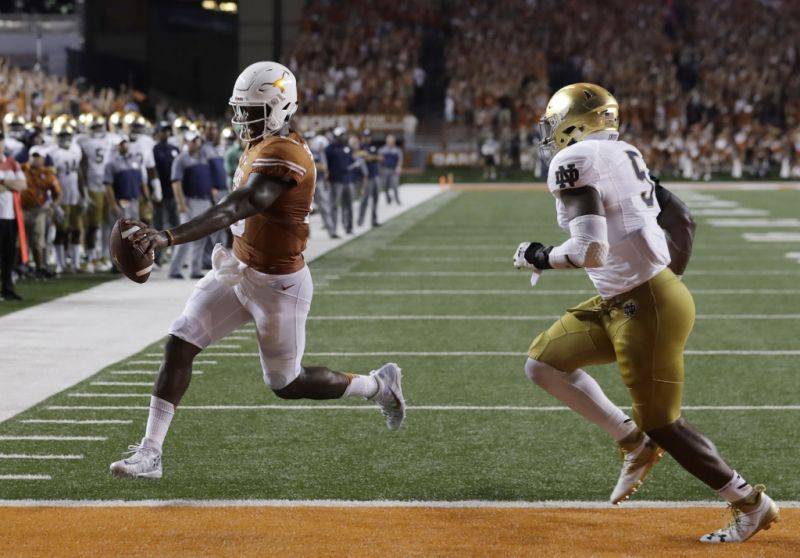
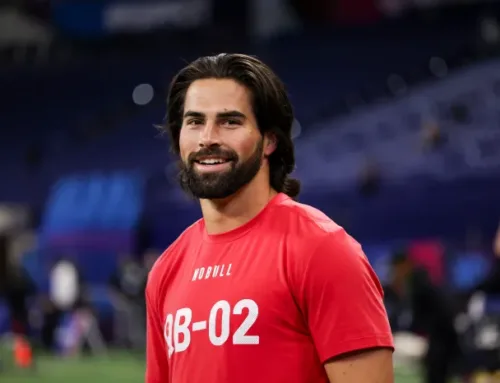
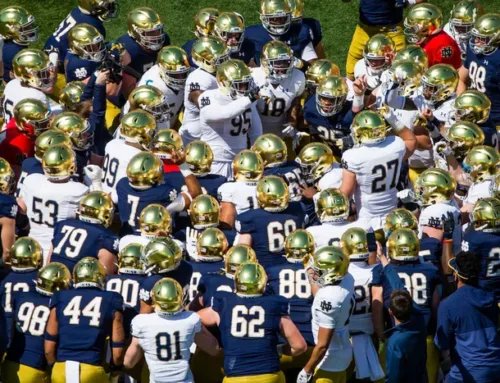
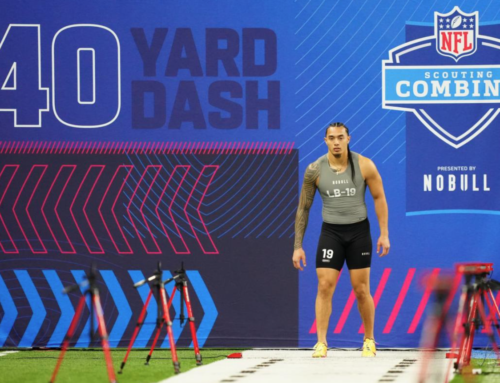
My god, what if the pass rush doesn’t show up against USC? The two teams could combine for 10 or 15 passes over 40 yards. The USC defense looks pretty terrible, so I would expect that they will be going for shootouts the rest of the year, just like us. Should make for a fun, if ugly, game.
Sadly, the USC defense only looked bad in the second half (although really really really bad). I think a lot of that can be attributed to Bama’s ridiculous level of depth and talent just finally overwhelming them. We have seen time after time, Bama pounds and pounds good teams and eventually (or quickly) breaks them. Especially when Saban has lots of time to prepare. For the first half the USC D looked pretty darn good. They only let up 1 long TD and 1 FG.
So, while USC did NOT by any means play a good game of defense, I am not convinced they will have all that bad of one over the course of the year.
Ugh. It’s been two days and this loss is still brutal. If the defense plays like they did against a true freshman in a brand new offense and a qb who can’t throw, this could be a 7 win team. Is anyone not yet freaking out over the games against USC, Stanford, Miami, and NC State?
Just like in 2013, we have the chance to secure consecutive double-digit win seasons, which would go a long way towards a perception that the program is back. We screwed that up in 2013 by getting miserably outcoached on offense, and now we seem determined to repeat that mistake, this time by running an incoherent defense that gets the worst out of it’s personnel.
I’m not freaking out, just resigned to the fact that our defense is borderline useless. I’m basically looking at those games you mention, and many others on our schedule, as toss-ups. 7-6 looks like a possibility, although I think Kizer has enough Superman in him to keep us at 8 or 9 wins.
I try not to be overly critical of coaching, and much of our inadequacy on defense stemmed from our inability to get Swoopes & the Texas RBs down to the turf, but I will say two things; Brian Kelly’s “toe the company line” style of running our program (which I generally like) led to retaining BVG but we absolutely need a change at DC after this season, and that conservatism seemed to creep into Kelly’s late-game play calls, culminating in his draw call on 3rd & 12 in the 4th quarter. That play reeked of Northwestern circa 2014 with Cam McDaniel fumbling as we tried to salt the game away. Give me that aggro ASU comeback play-calling, BK! Deshone can handle it!
In my humble opinion, it’s absolutely mind-boggling that Kelly chose to retain BVG for the current season. I fully understand the two have a professional relationship that dates back to their days together at Grand Valley State from 1989 – 1991 and that BVG’s son is currently on the roster. However, Notre Dame and Kelly are in the business of winning football games and not doing favors for under-performing colleagues who also happen to be friends.
If BVG couldn’t produce even an above average defense with the likes of future NFL players Sheldon Day, Jaylon Smith and KeiVarae Russell, what made Kelly believe 2016 would be any different/better? To add to the frustration, Kelly stated during his Monday teleconference that making snap judgments about the defense would be “Monday Morning Quaterbacking,” and that everyone should “pump the brakes.” Ever since the close call against North Carolina’s up-tempo offense in 2014, we’ve seen no positive improvement from BVG’s defense.
I’m hoping Kelly understands that BVG is a failed experiment and simply putting PR spin on the situation for the sake of the program. One can only hope…
Anyone else nervous that Kelly will stick with his 2QB experiment against Nevada? I could see Zaire having a good game, vs. the worst team on the schedule and the question not getting settled.
Not even remotely. I’m convinced that the first series of the second half will be Zaire’s last meaningful game action in an Irish uniform, barring injury to Kizer. I mean, it was so obviously not close when the lights came on. Zaire’s last play, when Texas blitzed and he looked utterly confused about what to do, was the nail in the coffin for me. He’s a great kid, but he’s just not at the level he needs to be to take the job. Especially from Kizer, who is going to get himself an invite to New York City in December and rocket up draft boards if he keeps playing like this, which is basically how he played last year.
Of course Kelly is going to say something like that. But expect Kizer to start and Zaire to be a clearer QB2 this week. I doubt that any success he has against Nevada will overshadow Kizer’s success against… well, everyone else for Kelly.
What does ND have to do for Kizer to win the heisman? Would 10-2 be good enough if he plays even 90% of what he did against Texas?
I think so. Gone are the days of Hornung, who won it for an Irish team that went 2-8, but your team certainly doesn’t have to be flawless. It’s practically a quarterback award at this point, so Kizer has a leg up already there. If he puts up a 3,000 yards and 30 TDs passing and 600 yards and 8-10 TDs rushing – which I think are very possible – he should be firmly in the discussion.
Recent winners with team record when voting concluded (i.e., before championship week):
2015 – Derrick Henry, Alabama – 11-1
2014 – Marcus Mariota – Oregon – 11-1
2013 – Jameis Winston – FSU – 12-0
2012 – Johnny Manziel – Texas A&M – 10-2
2011 – Robert Griffin III – Baylor – 9-3
2010 – Cam Newton – Auburn – 12-0
2009 – Mark Ingram – Alabama – 12-0
2008 – Sam Bradford – Oklahoma – 11-1
2007 – Tim Tebow – Florida – 9-3
2006 – Troy Smith – Ohio State – 12-0
I just listened to the II podcast. They (especially O’Malley) think there is a good chance Kelly gives Zaire another chance Saturday. They are basing this on Kelly’s comments Monday and Tuesday and his failure to say otherwise. Man, I hope they’re wrong.
Is Kelly trying to get fired?
With that buyout money, do you blame him? I’m not actually trying to start a conspiracy. Although Economists will tell you that incentives always matter, even if the effect is very marginal.
Kizer named starter….Phew!
I thought I would add another comment after doing some research on Brian VanGorder’s history as a defensive coordinator at the collegiate level. In four years as Georgia’s DC (2001-2004), the Bulldogs played 52 games. In 34 of those games — or 65 percent of the time — VanGorder’s defense held the opposition to less than 20 points. What was the result of those excellent defensive numbers? 42 wins for the Bulldogs in those 52 games, including the 2002 SEC championship and a victory over Florida State in the Sugar Bowl during the same season. Let me repeat that once more — 42 wins in 52 games. Was that result a product of excellent recruiting and outstanding coaching from all defensive coaches on the staff during that span? Sure. But at the end of the day, the overall success of a defense begins and ends with the effectiveness of the defensive coordinator.
However, something strange must have happened with BVG between 2005 and 2013. During that time, he held the following positions:
2005: Linebackers coach, Jacksonville Jaguars
2006: Head coach, Georgia Southern
2007: Linebackers coach, Atlanta Falcons
2008 – 2011: Defensive coordinator, Atlanta Falcons
2012: Defensive coordinator, Auburn
2013: Linebackers coach, New York Jets
2014 – Present: Defensive coordinator, Notre Dame
It seems to me that VanGorder’s time in the NFL perhaps reduced his ability to coach at the collegiate level given significant philosophical and schematic differences between college and NFL offenses. Could that be the reason he seems unable to decipher (or even comprehend) up-tempo, fast-paced offenses that we’ve seen from North Carolina, Northwestern, Texas, etc. during the past few seasons? Who knows. Either way, the writing is on the wall for BVG. He’s simply not cut out for the job he currently has, and I’ll be shocked if he’s fired between the end of the regular season and whichever bowl game we end up in.
Edit to last sentence: shocked if he’s not*** fired between the end of the regular season and whichever bowl game we end up in.
I’ve been thinking about that myself. BVG’s successes were practically in a different era of football. Things have drastically changed on the offensive side of the ball in the past 15 years, with the proliferation of modern spread and hurry up attacks, the zone-read and its variants, packaged plays, and more private quarterback coaching. Between that and his preference for complex defensive schemes and sub packages that he may have picked up in the NFL, he’s not suited to be a modern defensive coordinator.
That’s the bigger factor. He was effective at Georgia when everyone was running pro-style offenses, with a handful of option teams hanging around. Then he spent six years in the NFL, where the spread is non-existent (at least the way college teams use it), and came back to Auburn for one year, where he got torched by spread offenses. One more year in the NFL, and now us. His system is not cut out to handle spread offenses and he hasn’t been able to adjust it to them.
If you haven’t listened to BGI’s podcast with Brian Driskel and Lou Symogi, I highly recommend it. Coach D analyzed each position and the podcast goes into a lot of detail on each one. Many were not as bad as one would think (O line, MZ, and defensive backs) and some not as good as you might have expected (Kizer). He talks about lots of head scratching decisions by BVG as you might expect.
Driskell hates BVG, to the point where I tend to take his opinions of what BVG does with a grain of salt. Not saying he’s always wrong, just that his distaste for VanGorder is so strong that it’s hard to trust everything that he says. There are times when Driskell sounds like he doesn’t think VanGorder could navigate his way out of a wet paper bag with a GPS system.
Also, if he thinks Zaire wasn’t as bad as he looked and Kizer wasn’t as good as he looked, I’m sorry, but he was watching a different game. Zaire looked completely out of place and Kizer looked like a potential Heisman candidate. Kizer missed some reads and some protections, but he definitely looked like a top 5 QB. Zaire looked like he didn’t belong on the field for meaningful snaps.
I’m not going to trust a podcast that doesn’t think the defensive players were terrible in this game. Nobody could tackle, Martini looked like he didn’t want to be out there, when the DBs pressed they couldn’t get a jam, when they played off they still got run past or couldn’t come up and tackle on quick throws. BVG could be the world’s greatest schemer and that still would have looked somewhat ugly.
And as Brendan said, his analysis on the QB production is seriously misguided. Add another TD to Kizer’s already gaudy stats for that incredible throw to Hunter (seriously, that’s easily going to go down as one of the best throws of the year on any QBs draft tape) that was dropped on the targeting play.
I agree with you and Brendan. Driskell had cups of coffee at 2-3 schools I’ve barely heard of, mostly as a recruiting coordinator, yet thinks he’s a football expert. I got so sick of his BS I killed my subscription and actually got my money back, although they fought that mightily. My credit card company sided with me.
I think Symogi is ok, but I never look at that site now.
I agree Kiwi. I always thought Driskell talked as much as he did to make it harder to cut through all the BS he was spewing. I was glad to see him leave ISD.